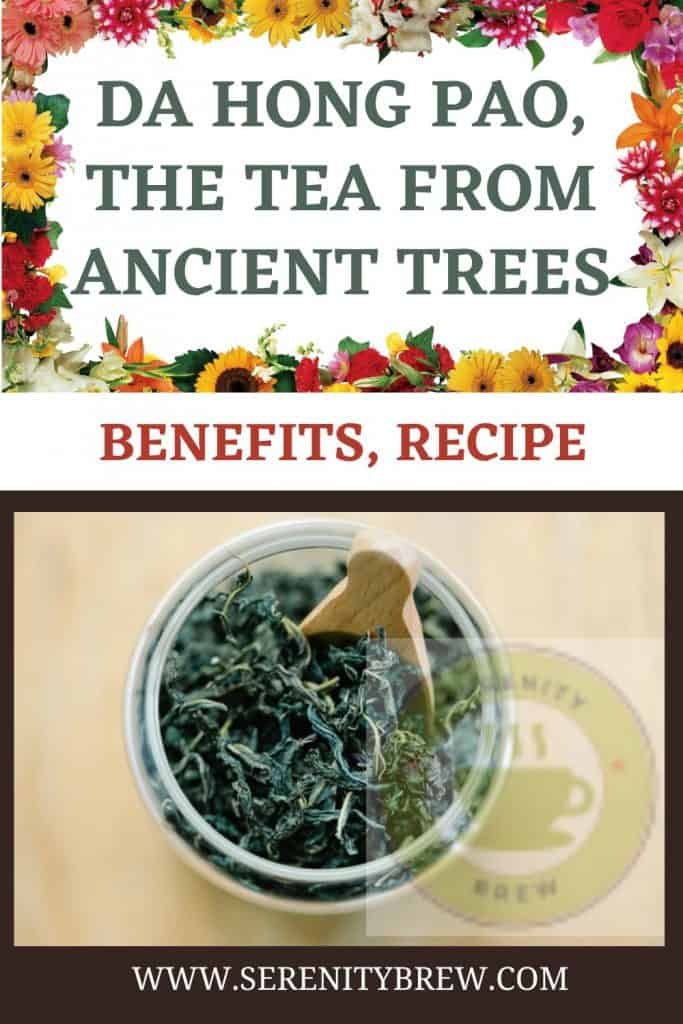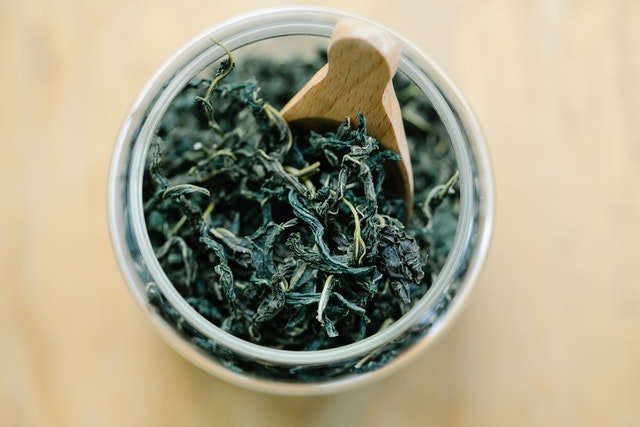
Da Hong Pao is a unique tea that stands out for its incredible quality. It is also hard to believe its prohibitive price. Did you know that a single gram of this tea can be paid for more than 1086.32 USD?
Although true Da Hong Pao is produced exclusively from the leaves of a few tea trees that grow on Wuyi Mountain, there are more affordable, high-quality versions made from the cultivation of cuttings from the original ancient trees.
Today we will tell you how Da Hong Pao is produced, what it tastes like and everything related to one of the most expensive teas.
What is Da Hong Pao?
Da Hong Pao is a variety of Chinese oolong tea and its name could be translated into English as “Great Red Layer”. It is an oolong with a high degree of oxidation, therefore more similar to a black tea than a green one.
Authentic Da Hong Pao is produced from the leaves of a few thousand-year-old tea trees that grow high on Wuyi Mountain in China. Being such rare trees, there have been times when they have come under strict armed surveillance. Currently, its production is controlled by the Chinese government.
Being such old trees, their production is scarce. The last harvest was carried out in 2005 and there are no current data indicating whether or not it will be possible to harvest its leaves again. For this reason, those who have a few grams of this tea in their possession keep them under lock and key.
As Da Hong Pao has become more popular, producers have worked hard to increase its availability and lower its price. Although being fussy, authentic Da Hong Pao is only produced from the original trees, there have been initiatives that make this tea from plants grown from their cuttings and in places outside of Wuyi. The tea obtained is of a high quality and is marketed at high prices but much less prohibitive.
In this way, there are varieties of Da Hong Pao available to the general public.
Why is Da Hong Pao so expensive?
The Da Hong Pao is considered a Chinese national treasure and, for this reason, the government is in charge of strictly guarding its production. As we mentioned before, the original trees that produce it are very rare and are jealously protected.
Do you know how many kilos of Da Hong Pao are obtained per year? Currently, not one; only a few hundred grams are harvested. The old age of the trees means that they hardly produce new shoots each season. As you can imagine, this meager harvest is the main reason why the price of authentic Da Hong Pao continues to rise.
In addition, this tea can be preserved and specialists say that it gains in nuances with age. These facts give rise to the appearance of a world of collectors. Those who have a few grams of this tea at home guard it carefully and those who offer it end up selling it at truly exorbitant prices. In one of the few auctions open to the public, 20 grams of this tea were paid at 19553.72 USD and, subsequently, the figures per gram continued to rise until reaching almost 1846.74 USD; that is, more than the cost of a gram of gold.
Health benefits
This tea is a very oxidized oolong, which due to its characteristics is closer to black teas than to green ones.
Like all teas, it has an interesting concentration of antioxidants and polyphenols that take care of the body by preventing oxidative damage caused by free radicals.
According to various scientific studies, antioxidants would have a protective effect on the heart, brain and the body in general, by preventing potentially devastating diseases such as degenerative, vascular, diabetes and even cancer.
The ritual of drinking Da Hong Pao
As you can imagine, drinking Da Hong Pao is a special and surely unique experience. For this reason, those who are lucky enough to be able to afford a cup of this particular infusion make a pilgrimage to the mountains to pay tribute to the god of tea, Lu Yu. Thus, they pray for the birth of new shoots from the original trees.
What does Great Red Cloak tea taste like?
In the cup, it is observed as a coppery-orange infusion reminiscent of black tea but with much more striking aromas. It is possible to detect floral and toasted notes (due to its drying treatment) and sweet touches reminiscent of cocoa and honey.
On the palate it is refreshing, with a very unique mineral note known as Yun Yan and that simply cannot be explained in words. The end of the infusion leaves a pleasant and light sweet aftertaste.
How to prepare a cup of Da Hong Pao

In this case, it is recommended to heat the water to 100°C in order to extract the maximum possible flavour, aromas and health properties. Of course, the ideal is to use a wide pot that allows the leaves to move freely and that the water completely surrounds them.
Let’s see the step by step for its preparation.
- Heat the cup with the water to 100°C.
- Place 1 gram of tea in it.
- Wash the leaves briefly under hot water and discard the water.
- Infuse the leaves for 90 seconds.
- Strain and serve.
As with other high quality teas, the leaves can be used in various infusions and, in fact, it is advisable to do so to observe the evolution of the tea. Increase the rest time in each infused and check if the tea is at the intensity you want. If it is very soft, increase the resting time and if it is very strong, decrease it.
We hope that someday you will have the opportunity to try one of the most extravagant and valued teas in the world. If you do, leave us a comment telling us about your experience.
